Your cart is currently empty!
Discover Over 22 of the Best Iranian Handmade Carpet Styles
Discover over 22 unique styles of authentic, handmade Iranian carpets, showcasing the rich craftsmanship and cultural heritage of Iran at Made in Iran.
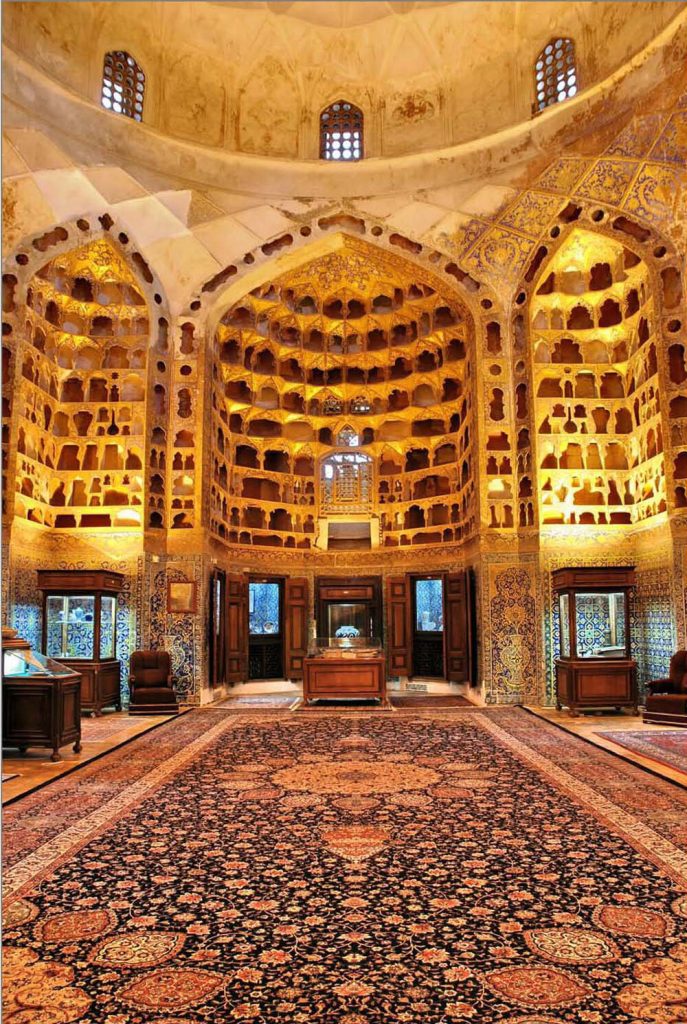
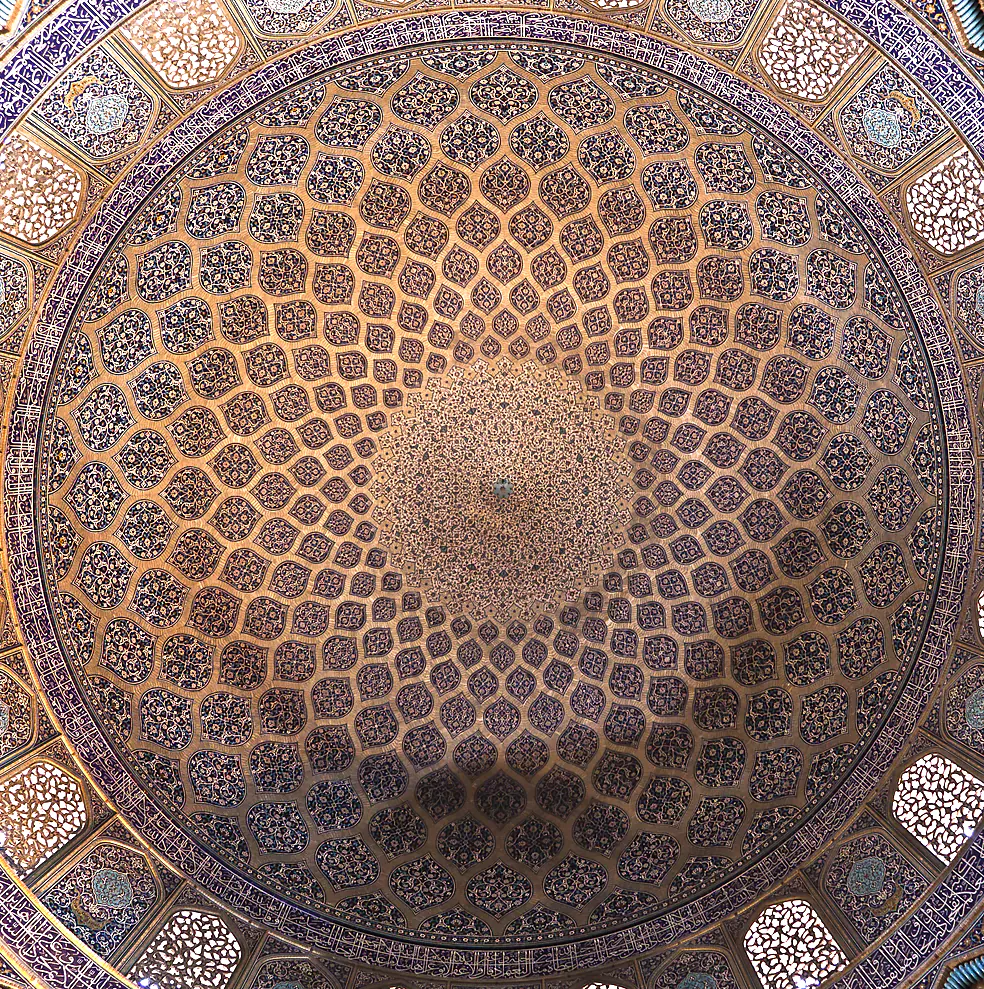
Types of Handmade Carpet Styles and Their Authenticity
“Persia, the ancient name for Iran, takes pride in having the finest culture and art of carpet weaving in the world. The art of weaving and dyeing carpets among Iranians is a heritage art, and carpets of all sizes and styles are produced in Iran. The Turkish-speaking population of Iran uses the Senneh knot. Handmade carpets are usually named after the region where they are woven or the ethnic group that weaves them. Often, the patterns and colors are tied to the region where the carpet is made, so by simply seeing a handmade carpet, one can accurately identify where it was woven. For example, these days in India, copying popular Iranian carpet styles is common. A good example is the Indo Gbbeh style.
The most common and well-known styles are Persian, Afghan, Pakistani, Baluchi, Turkmen, Caucasian, Indian, Tibetan, Turkish, Chinese, Azerbaijani (Eastern Azerbaijan), European, and South American.
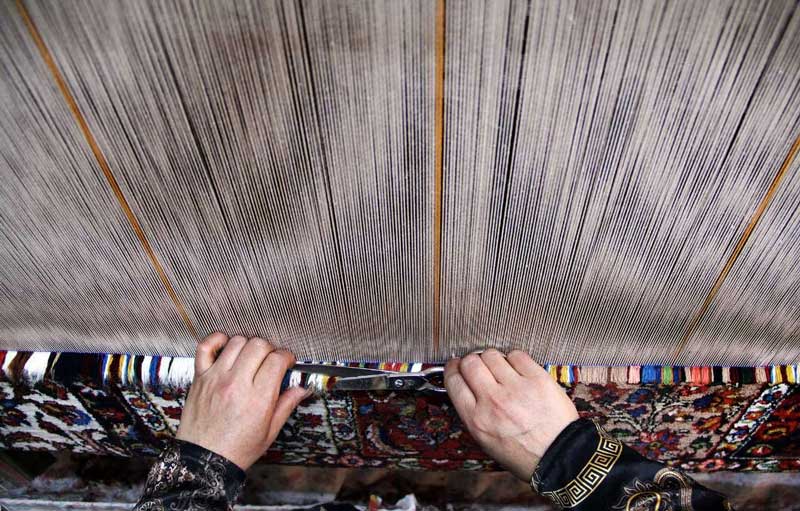
The importance of carpet production and weaving over the years undoubtedly comes from Iranian carpets. There are a great many different Iranian styles, and in this section, we introduce the most important of them.
Carpets produced in Iran are often named after the region where they are made, for example, Hamadan, Mashhad, Bijar, or Shiraz. They can also be named after the various tribes that produce them, such as Qashqai carpets.
A visitor will quickly notice that carpets play an important role in this society. In major cities, carpet stores are often found side by side in specific districts or streets. In the streets, small trucks or vans carrying carpets can be seen heading to the market. Weaving machines and other tools like yarn are readily available for sale everywhere. In some areas, one may see someone spreading out a carpet and washing it with water and a brush.
Many Westerners mistakenly think of Eastern carpets as Iranian carpets, which is not entirely accurate, though this misconception is understandable considering the impact of Iranian carpet production around the world. Swedish author Nat Larson in his book about Eastern carpets says: “Iranians carefully preserve their art and culture of carpets; their weaving skills are outstanding and excellent, making them the finest in the world.”
Kashan Handmade Carpets
“Kashan City, with a population of about 120,000 people, is located right between Tehran and Isfahan, on the edge of the Kavir Desert. This city has long been famous for its fabrics and ceramics. As a commercial hub and a resting place along the Silk Road, it has always been of great importance. The famous Ardabil carpet, which is currently on display at the Victoria and Albert Museum in London, is said to have been woven in Kashan in the 16th century. Moreover, today’s carpets sold under the name Kashan handmade carpets have a very good reputation.
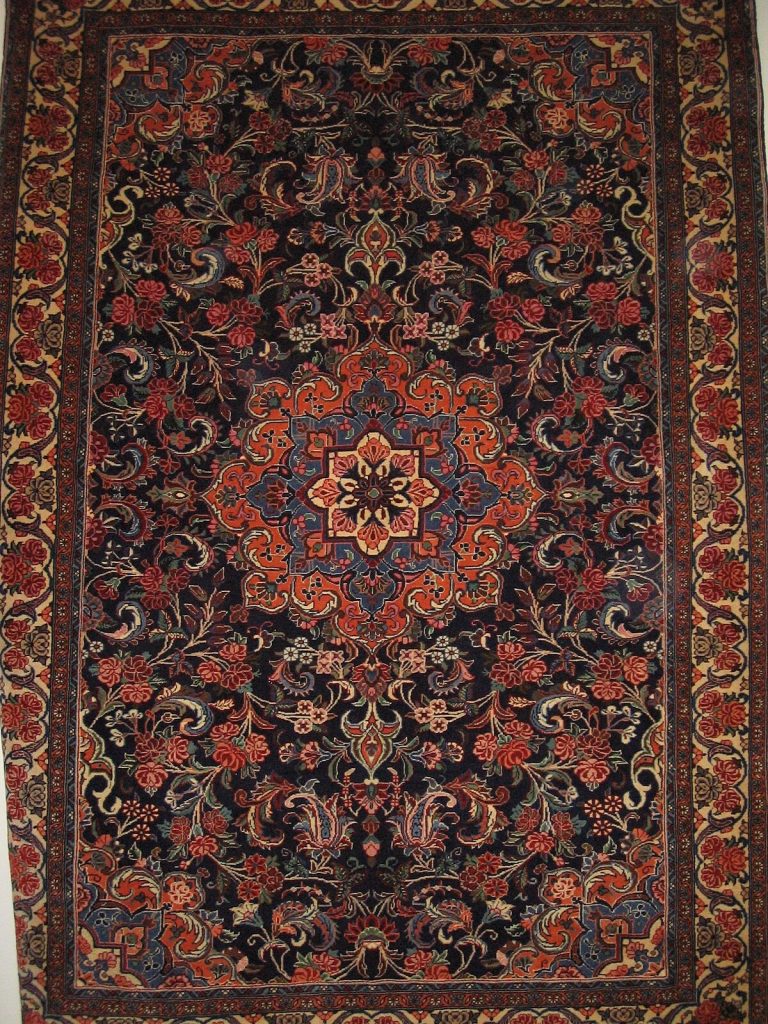
These carpets are handwoven in the city of Kashan and its surrounding villages. The most prominent carpets were produced during the Safavid period (1502-1736 AD). After a period of stagnation, high-quality carpets were once again produced in the late 19th century. These carpets are made with Iranian knots, featuring a very high knot density, with cotton warp and weft, and made from very high-quality materials. Their patterns include decorative framing, designs of arches, trees, relief designs, and all-over floral patterns that are beautifully designed. Their dominant colors are blue, red, and beige.
The quality of these carpets varies greatly. Some of them, although not produced in Kashan, are sold under the name Kashan carpets.
Afshar Handmade Carpets
Around the city of Kerman, located in the southeast of Iran, is the settlement of half of the Afshar tribe’s nomads. These nomads lived for hundreds of years in the northwest of Iran, but half of the tribe was forcibly moved to their current region, where the carpet industry has become an important branch of trade.
Kashan handmade carpets are typically in red and blue, and mostly feature geometric patterns. The most common pattern includes a central part with one or more square medallions. Some say that this is a hidden symbol drawn to prepare the carpet.
Even today, these medallions exist and are actually considered a symbol of Afshar carpets. Additionally, the width of these medallions varies depending on the length of the carpet; the longer the carpet, the wider the medallions become.
In the city of Babak, which is located near Afshar, similar carpets are produced—carpets with higher density, more precise patterns, and more detailed designs. Afshar carpets in the market are commonly known as Sirjan carpets.
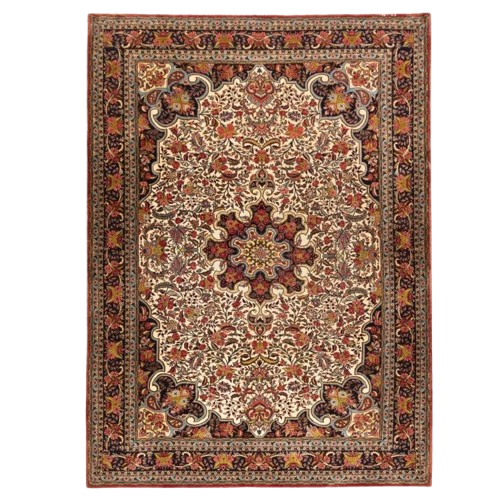
Ardabil Handmade Carpet
Ardabil, the capital of Ardabil province, is located in the north of Iran, on the shores of the Caspian Sea. Hearing the name Ardabil handmade carpet might remind a carpet expert of the famous Ardabil carpet, which is currently housed at the Victoria and Albert Museum in London. This carpet was actually woven in Kashan, but it was originally placed in a mosque in Ardabil and was eventually sold to fund the mosque’s renovation.
Carpets produced in Ardabil are inspired by Caucasian patterns, such as those from Shirvan, Karabakh, and Ganja. Later, these carpets became a popular and cherished item among collectors. Ardabil carpets are thin, with very beautiful geometric patterns and fine weaving. Today, the majority of these products come from high-quality carpet manufacturers and are sold under the name Ardabil carpets.

Bakhtiari Handmade Carpet
In the foothills of the Zagros Mountains, west of Isfahan and around Shahrekord, the Bakhtiari nomads reside. Most of them speak Persian or the Lorestan dialect, while those in Khuzestan speak Arabic. The Bakhtiari men wear loose trousers, round hats, and short shirts, clothing that dates back to the Parthian dynasty. At that time, the leaders of the Bakhtiari tribes (the Khans) held a powerful position in Persian society. Chaharmahal and Bakhtiari is one of the largest areas for producing handmade carpets, attracting tribes and villagers of all ethnicities.
All of these carpets are sold under the common name Bakhtiari (or Bakhtiyari). Sometimes, they are named after the local areas where they are woven, such as Beladji, Fereidan, or Saman. These carpets are woven from highly durable wool and are well-crafted, making them very strong and thick, considered some of the most durable carpets in Iran. One of the well-known patterns of these carpets is the tile pattern (known as the garden design), where the carpet is divided into squares featuring plants and animals, symbolizing Persian gardens. Additionally, medallion patterns and tree designs are other motifs derived from Isfahan carpets.
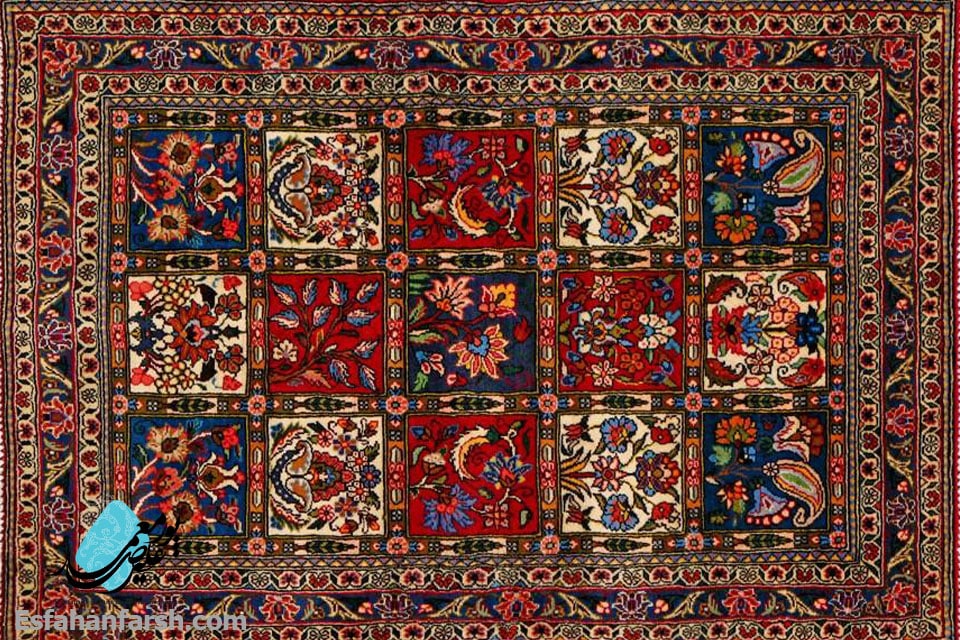
Baluchi Handmade Carpet
The Baluch people live in the border region between Iran and Afghanistan. Baluch is a general term used for nomadic groups formed by smaller tribes with various origins and ethnicities. Their livelihood is supported through agriculture, sheep, goat, and camel breeding, as well as carpet production.
Baluchi handmade carpets have a close connection with carpets from Afghanistan and Turkmenistan. Their colors are often dark red, dark blue, matte, brown, and black. Their patterns are geometric, often depicting the tree of life in curved shapes. These carpets are commonly designed as prayer rugs, featuring a mihrab design.
Sometimes, these carpets include decorative kilim sections along their width to protect them from wear. The length of these carpets is often made up of many cords woven from goat hair and horsehair. Their warp is made from wool or a combination of wool and goat hair, while newer carpets may feature cotton warp threads.
They are of very high quality. These carpets are strong yet thin, evoking the authentic and real feeling of nomadic handicrafts. These carpets are often small in size with vibrant, spirited designs, and prayer rugs are very common.
These carpets are sold in Mashhad and are known as Baluchi-Mashhad carpets, while those sold in Herat, Afghanistan, are known as Baluchi-Herat carpets.
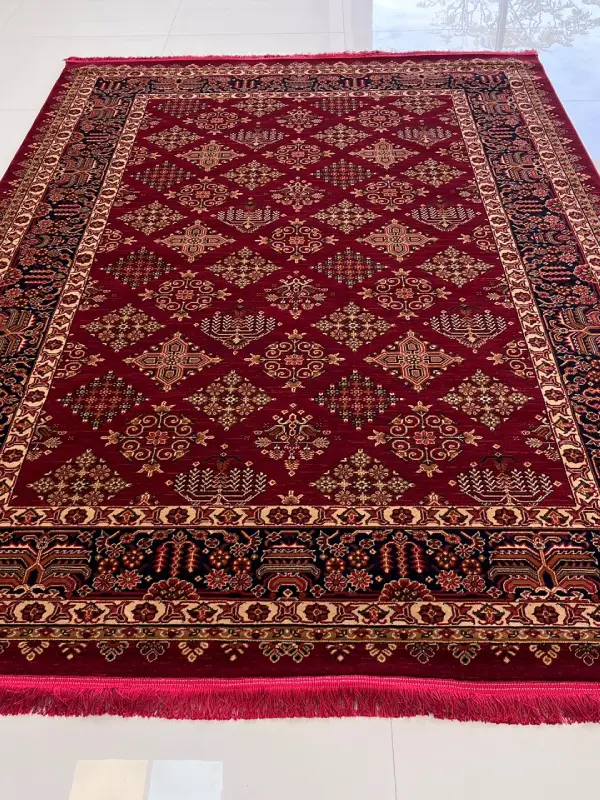
Bijar Handmade Carpet
Bijar is a small Kurdish town in the west of Iran. Kurdish carpets are often very sturdy and compact, which contributes to their exceptional durability and longevity. For many experts, the name Bijar carpet symbolizes strength and resilience. Weavers use heavy combs made of wood and metal to pack the weft and knots, making the warp and weft tightly intertwined, resulting in a very dense surface. Consequently, no pebbles, sand, or any small particles can penetrate the carpet.
Bijar handmade carpets often feature Turkish knots and are usually in shades of red and blue with beige elements.
The most common pattern of these carpets is the Herati pattern (also known as the small fish pattern), though medallion and floral designs also appear. Bijar carpets are produced in various sizes, ranging from 150×100 cm to larger dimensions. These carpets are known for their balanced colors, elegance, and beauty, making them suitable for most environments. Due to their high durability and strength, these carpets are ideal for use in public spaces.
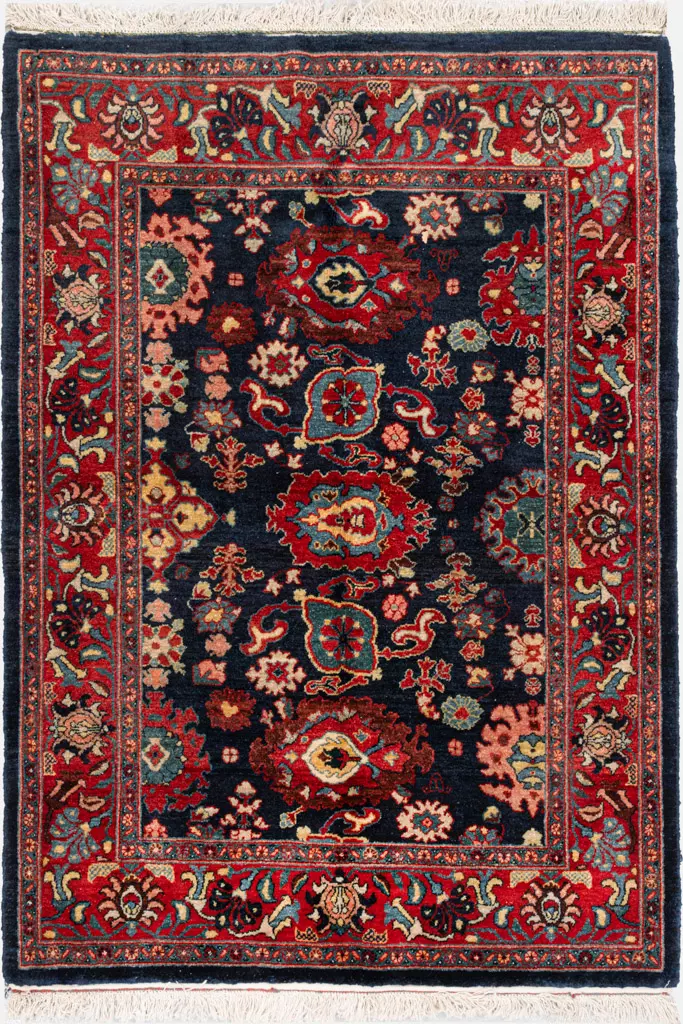
Mashhad Handmade Carpet
The city of Mashhad, located in the east of Iran in the Khorasan Razavi province, is one of the holiest cities in Iran. The eighth Shiite Imam passed away and was buried in this city. This place has grown from a small, unknown village into one of the largest cities in Iran, with a population of about 2 million people. Every year, more than 12 million Shia Muslims visit this city.
The production of handmade carpets, especially large-sized ones with decorative framing (also known as medallion patterns), sold under the name Mashhad carpets, is quite expensive. Their quality varies, and the fibers of Khorasan carpets are easily identifiable by their softness, distinguishing them from other carpets.
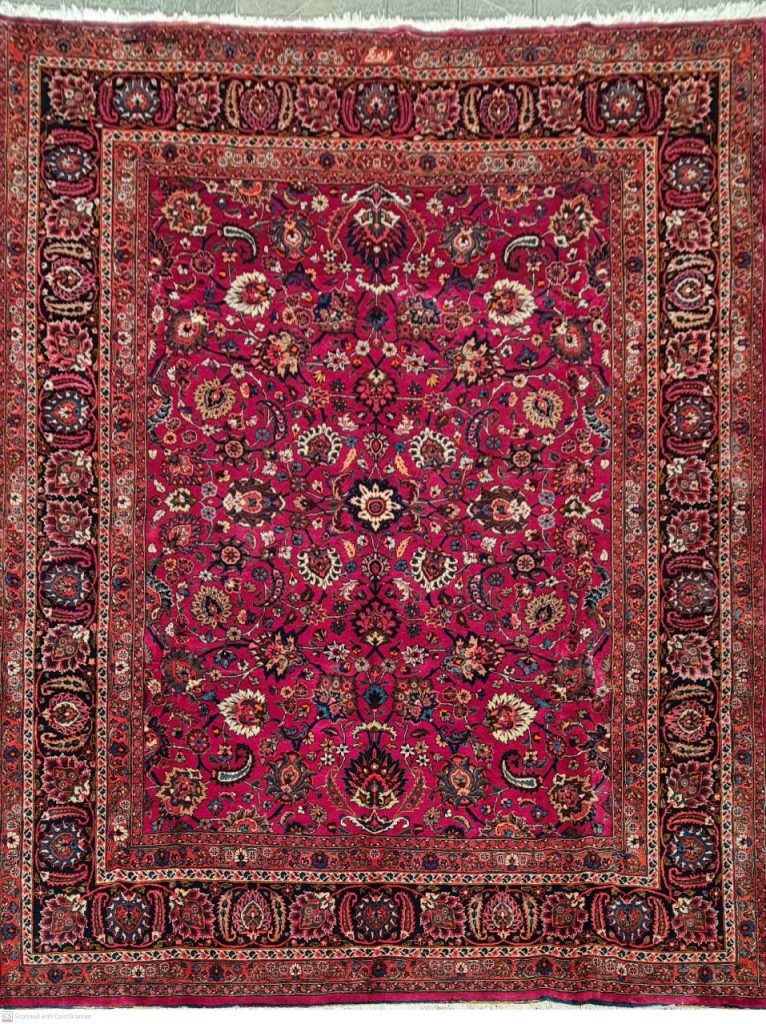
Abadeh Hand Carpet
The city of Abadeh is located between Shiraz and Isfahan. The only thing that attracts tourists to this city is the high-quality and premium carpets produced here.
Initially, Abadeh handmade carpets had designs featuring vases and poor-quality colors. These carpets faced specific challenges when entering the market, and the weavers sought to find new patterns. They were inspired by the Qashqai nomads, who set up their summer camps in the pastures of this region. These carpets typically feature a combination of red-brown and blue colors and also include medallion patterns in the center and corners.
These carpets usually have a large hexagon in the center, with a crescent or a medallion pattern in the corners, as well as a design known as the Hebat Lou. The background is covered with small images of birds, four-legged animals, along with flowers and trees. Due to their rigidity, durability, and strength, these carpets are highly functional and practical.
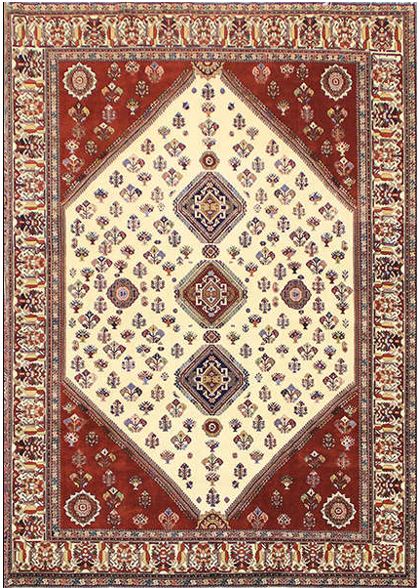
Gabbeh handmade Carpet
Gabbeh (in Persian, it is referred to as raw, natural, and uncut) represents a rough and primitive carpet, with patterns often designed by the Qashqai nomads of Fars Province in the southwest of Iran. These carpets are probably the most well-known handmade carpets in Iran. The warp and weft of these carpets are made from wool, and vegetable dyes are used to color the fibers. These carpets are thicker than other Iranian carpets, sometimes reaching a thickness of up to 2.5 cm.
The patterns of these carpets are simple, with only a few decorative elements. They are often composed of rectangles containing images of animals. In recent decades, weavers have been forced to meet the demands of the Western market, which has led to the inclusion of larger, lighter-colored fields with more precise shapes in their designs.
Indian weavers quickly copied these designs, but it is important to note the significant differences between Iranian Gabbeh and Indian Gabbeh. These differences are often noticeable by the quality of the wool used. Iranian Gabbeh is softer, more durable, and definitely of higher quality compared to the Indian version.
Currently, there are various names for Gabbeh carpets, including the original type, Kashkuli, Lore weaving, Sumak, and Baluchi Gabbeh. The Kashkuli Gabbeh is a high knot density Gabbeh, which has less thickness compared to other common Gabbeh types.
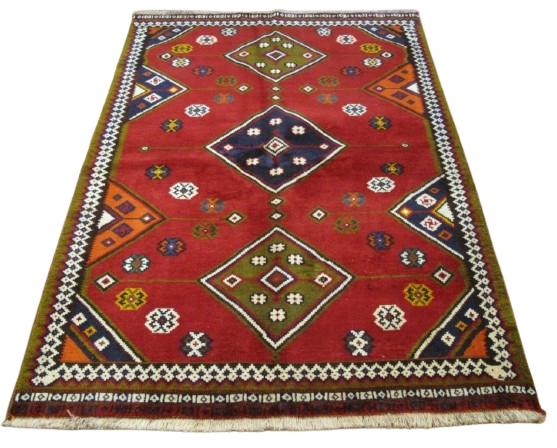
Qashqai Handmade Carpet
The Qashqai people are found in Fars Province, in the southwest of Iran. They reside in the provinces of Fars, Khuzestan, southern Isfahan, and primarily in the outskirts of Shiraz. Twice a year, they migrate from their winter pastures near the Persian Gulf to their summer pastures in the Zagros Mountains, which are much cooler, and vice versa.
During their migration, one can see men wearing traditional round hats, running alongside their dogs while tending to their goats and sheep, traveling along dusty roads. Women, in their colorful garments, assist with horses and donkeys towards their new campgrounds. The tents they live in are often made from goat hair.
Carpet weaving, along with kilims, bags, rabani fabrics, and other decorative handicrafts, plays an important role in the nomadic lifestyle.
These carpets typically have a red-brown background. Their designs are closely tied to the history and memories of the Qashqai people and often include medallion patterns placed at the center and repeated in the four corners of the carpet. Human figures, four-legged animals, birds, trees, and flowers are among the most popular design elements.
Other patterns are derived from the wall paintings and columns in Persepolis (the official capital of Iran during the Achaemenid Empire, around 330-550 BC). The nomads are also known for weaving bags and baskets, which are made for more practical purposes.
These carpets are woven on horizontal looms, with weavers sitting on the partially woven carpet during the weaving process. The semi-nomadic people who reside there at this time of year also weave carpets in the same method. One of the most well-woven and distinctive types of Qashqai carpets is the Kashkuli carpet. Gabbeh, as a rough, primitive nomadic carpet, represents this region.
In recent decades, weavers have had to meet the demands of the Western market, and as a result, they started using lighter backgrounds and larger designs with fewer patterns in their Gabbeh weaving. Qashqai carpets are beautifully woven, durable, and tell a great deal about the nomadic way of life. These carpets are made entirely from wool, goat hair, and some horse hair, and they are widely known as Qashqai carpets.
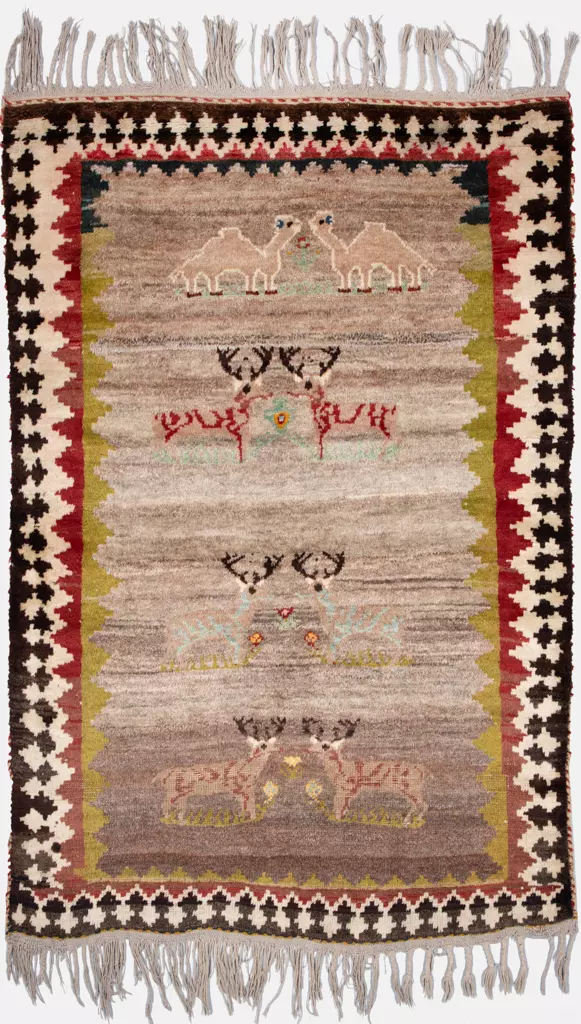
Most of the Qashqai nomads now live in cities and villages. As a result, their carpets are more directly influenced by market demand. These carpets, compared to other nomadic tribes’ carpets, have a coarser and rougher texture, and their fibers are made from cotton. Simpler carpets from this region are sold as Shiraz carpets. Shiraz, the capital of Fars Province, is the place where these carpets are sold. The markets are also where the nomads purchase other items needed for their daily life.
Qashqai carpets often feature a hexagonal or diamond-shaped pattern with four hooked images inside a diagonal diamond. Some Qashqai carpets have the Hebat Lou design (Hebat Lou is one of the smaller tribes of the Qashqai people), which includes circular medallions in the center of the carpet, with the same design repeated in smaller sizes in the four corners. In the weaving of Qashqai kilims, cotton is sometimes used to create shading effects. They often feature simple patterns, with the warp threads finishing at the long edge of the carpet.
The two tribes that are famous for their kilim weaving are the Amaleh tribe and the Dareh Shouri tribe.

Qom Handmade carpet
The city of Qom is located near a dried-up river, 150 kilometers south of Tehran. Qom is the second most sacred city in Iran and is home to a prominent seminary that widely educates students in religious studies. The sister of the eighth Shiite Imam is buried in a magnificent shrine in this city.
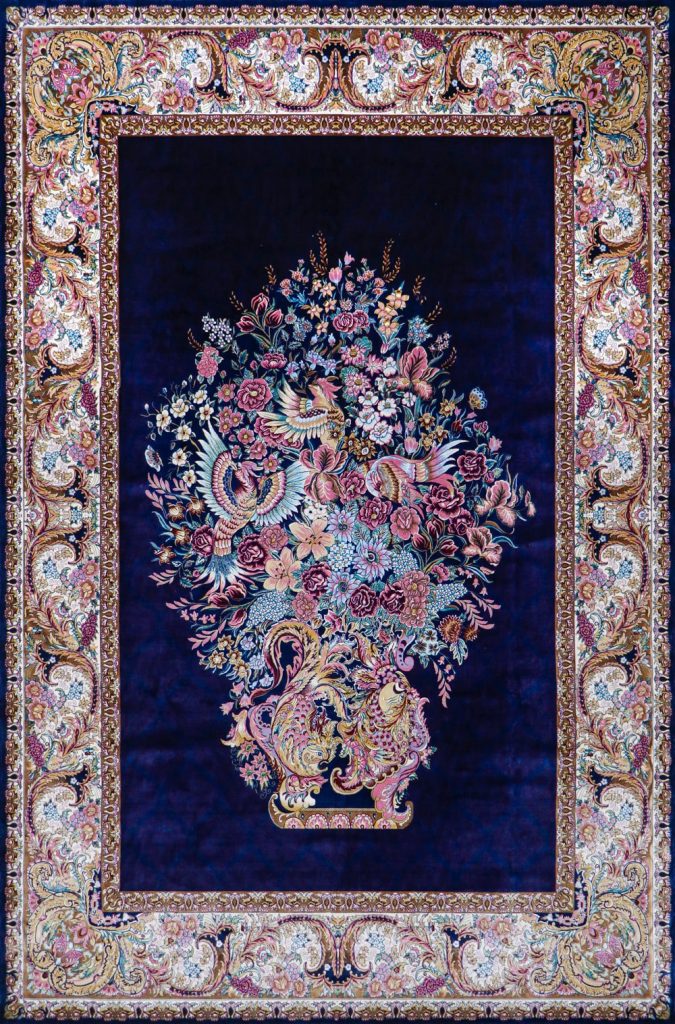
Carpet production in this region began in the early 20th century. Qom carpets are known for the high quality of the weavers’ craftsmanship and the fibers used, which are either silk or wool. They are often woven with high knot density and feature a wide variety of patterns, borrowing influences from various regions of Iran. Sometimes, parts of the carpet’s details are woven with silk. It is also common in this city to weave carpets entirely made of silk, known as Qom silk carpets.

Patterns of gardens, medallions, as well as shapes and motifs of animals and plants are commonly seen in Qom carpets. Today, carpets woven in other areas are also known as Qom carpets.
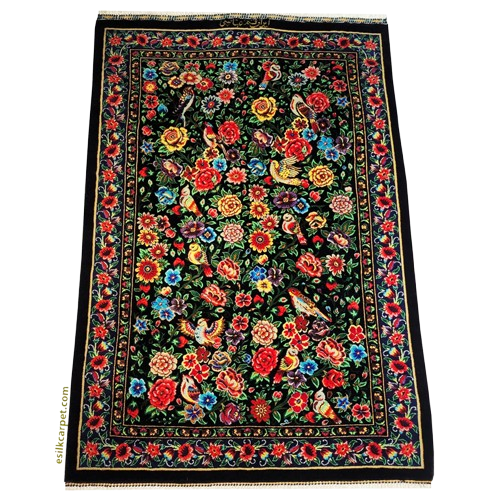
Hamadan Handmade Carpet
The city of Hamadan is located 300 kilometers west of Tehran, in the western regions of Iran. This city is one of the oldest cities in the world and is referred to as Ecbatana in the Christian Holy Bible. The city serves as a commercial center for carpets woven by hundreds of people from surrounding cities and villages. The best examples of these carpets are sold under their regional names, such as Nahavand, Toyserkan, Malayer, and Hoseinabad. Simpler carpets are sold under the general name Hamadan carpets.
It is worth mentioning that these carpets are recognizable by their traditional patterns and sizes. The patterns of these carpets are very diverse, and carpets with medallion patterns and similar repetitive patterns are common. Among the individual patterns, the most common design is the Herati pattern.
The predominant color scheme of these carpets includes indigo blue and rose red, with subtle color variations. Older Hamadan carpets can be highly attractive. In the city of Hamadan, carpets of much higher quality used to be produced. These carpets, known as Bafsh (city-woven), resembled Bijar carpets in terms of their structure. However, they are rarely found in the market today.

These carpets are woven from shiny threads, often dyed with natural dyes, which gives the surface of the carpets great durability and beautiful colors. Today, it is common for these carpets to be woven with cotton warp and weft. The designs of these carpets are mainly geometric shapes, but sometimes floral designs are also woven. The design and materials of these carpets can vary greatly in quality.
Older carpets (before 1920) were woven with wool warp, which makes them different from the modern carpets woven with cotton. Newer carpets (after 1960) often feature synthetic colors and are woven with lower-quality wool compared to the older ones. The most common sizes of these carpets are two-by-two and zar and neem (approximately 200×120 cm and 150×100 cm).
In general, Hamadan carpets are known for being high-quality and highly functional. Examples of Hamadan carpets include Borchali, Anjilas, Hoseinabad, Lilian, Khamsa, Zanjan, and Malayer, and these carpets are sold in the market under the name Hamadan.
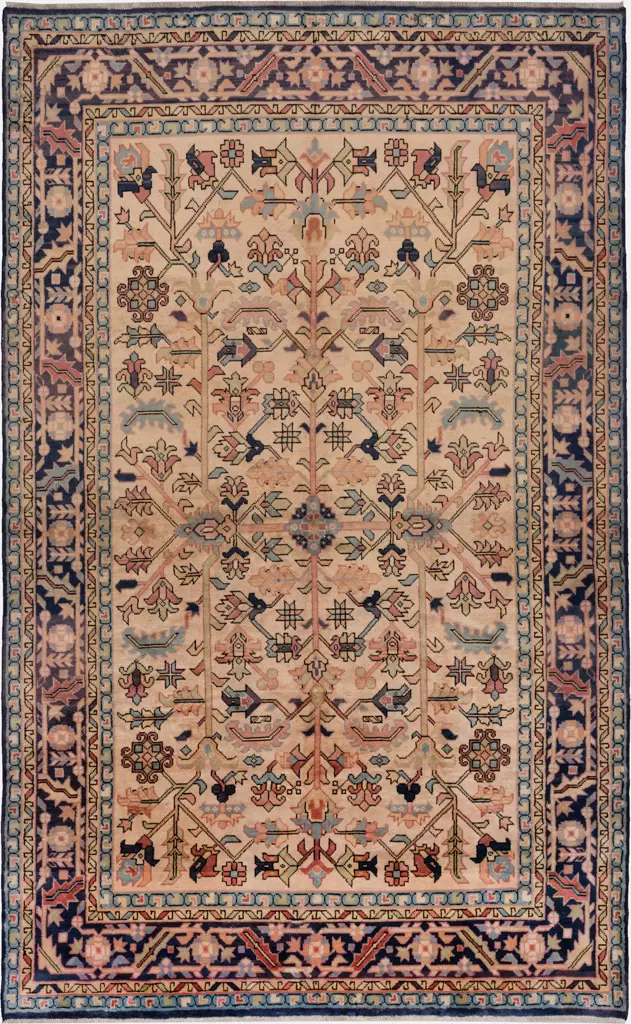
Haris Handmade Carpet
The city of Hariz is located in the northwest of Iran, near the large city of Tabriz. The carpets woven in this city and its surroundings have patterns that are easily recognizable. In the center of these carpets, there is a rectangular medallion design with wide borders. Larger carpets are typically woven from relatively rough fibers on cotton warp threads, and they feature rustic patterns.
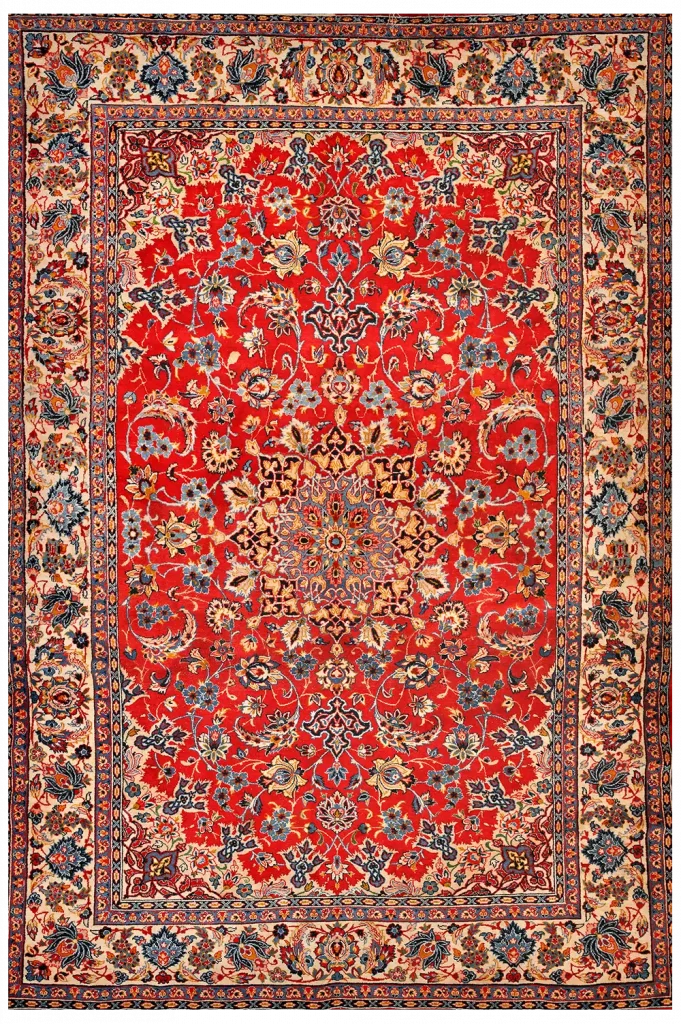
Hariz carpets are famous for the high-quality wool used in their production, known for their durability and strength, making them ideal for hallways and dining rooms. Larger sizes, such as 300×200 cm and larger, are more common. Similar carpets are woven in Gravan and Mehravan. Hariz carpets are suitable for use in both homes and public spaces.

Isfahan Handmade Carpet
The city of Isfahan is located in central Iran, east of the Zagros Mountains and west of the Desert. Today, this city is considered one of the most important industrial cities, with a population of around 1.2 million. For many, Isfahan is likely the most important tourist attraction in Iran. Architecturally, the city is a masterpiece and one of the best in the Islamic world. The Naqsh-e Jahan Square, with its two mosques and other buildings, parks, and old bridges, truly reflects the essence of the East for visitors.

Isfahan was the capital of Iran during the Safavid dynasty (1502-1736). The powerful Shah Abbas had a great passion for architecture, art, and handicrafts. The Imam Mosque, which resembles a large caravanserai, was built during his reign. The Imam Mosque is located at the southern end of Naqsh-e Jahan Square. Many people believe that the Imam Mosque is the best mosque in all of Iran. On one side is the Sheikh Lotfollah Mosque, and across from it is the Ali Qapu Palace. Surrounding the square are shops selling miniatures, gold, sweets, fabrics, and numerous teahouses. The Grand Bazaar, located to the north of the square, extends for about 5 kilometers towards the older parts of the city and the Jama Mosque, which was built in the 11th century. For a visitor, it’s easy to understand why Isfahan has been known as the half of the world since the 16th century.
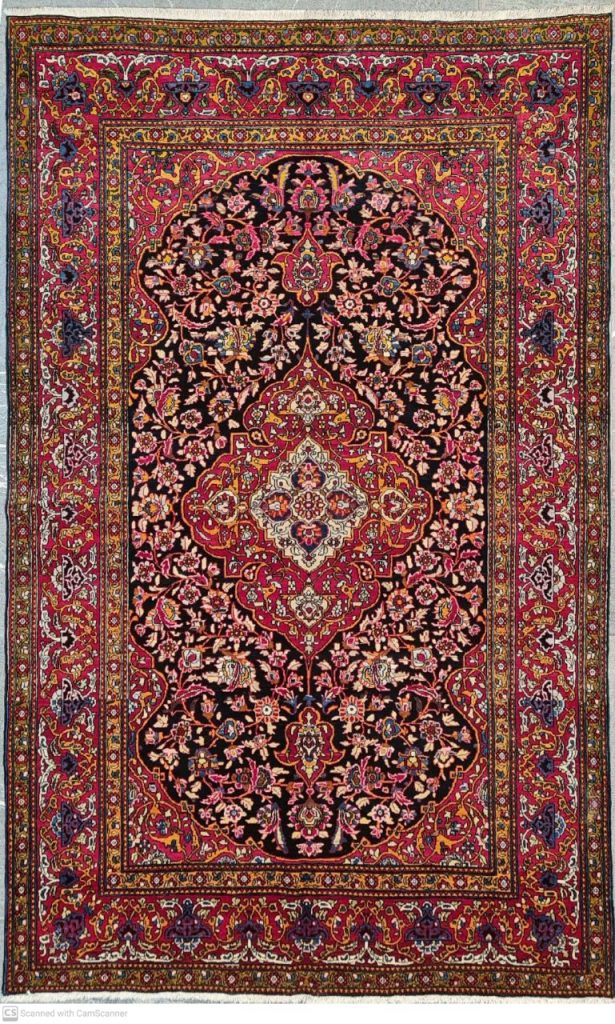
In Isfahan and its surroundings, there are many weaving workshops. Some, such as Seyrafian, Davari, Entezar, and Haghigi, have global recognition. The designs of these carpets are often inspired by the tilework of mosques, gardens, and palaces in the city. Isfahan carpets are known for their high quality, patterns, and the fibers used, making them premium and of the highest grade. They are characterized by low thickness and high knot density (following the Shah Abbas Safavid pattern). However, there are also designs featuring animals and human figures.
Along the main shopping streets, carpet stores are tightly packed together, and there are exhibitions in hotels showcasing carpets to attract buyers. In the suburbs of the city, there is a larger market where Yalmeh and Bakhtiari carpets are sold. These carpets are also sold under the name Isfahan carpets.
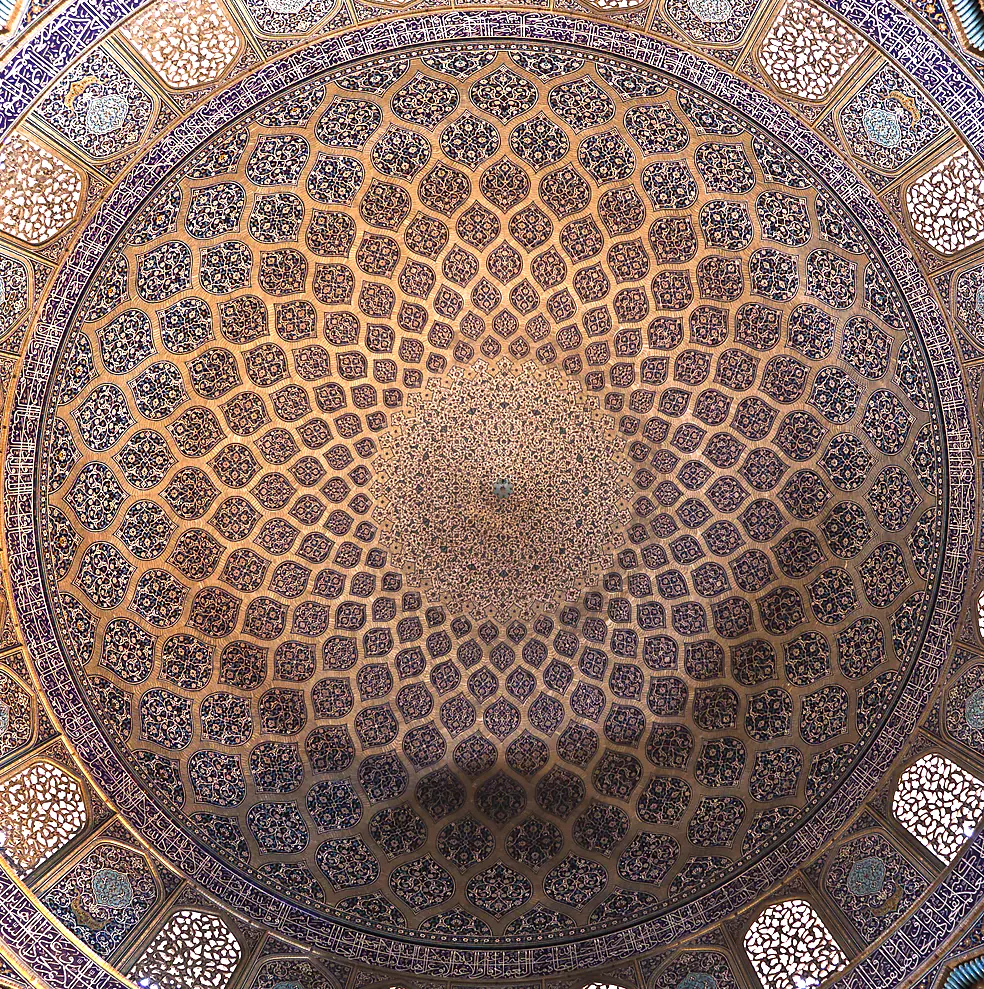
Kerman Handmade Carpet
The city of Kerman, with a population of about 350,000 people, is located in the southeast of Iran, near the Lut Desert. The city is more than 1000 kilometers away from Tehran and was founded in the 4th century. It has historically been of significant importance for those traveling along the trade routes between Iran and India. Over the centuries, various rulers have governed this city, including the Arabs, Seljuks, and Mongols.

Until a few years ago, Kerman was a good starting point for those wishing to visit the ancient Bam Castle, located about 200 kilometers to the south. Bam was one of the largest tourist attractions in Iran, but it was devastated by an earthquake during Christmas 2003, resulting in the loss of around 10,000 lives.
Today, the city of Kerman is known for its mosques, buildings, bazaars, and teahouses, offering a pleasant and inviting atmosphere. Carpet weaving is an important industry in the city, and Kerman carpets are easily recognizable. The background color of these carpets is often red, and the pattern typically features a central medallion design with a wide floral border. Carpets woven before World War I have different motifs, such as designs of trees, animals, and human figures. The design and materials used in these carpets are often of high quality.
Kerman carpets were once considered the best Iranian carpets, but unfortunately, modern products sometimes have lower quality. The modern Kerman-Lawar carpets feature all-over floral designs and bright, glossy colors. These carpets are also sold under the name Kerman carpets.
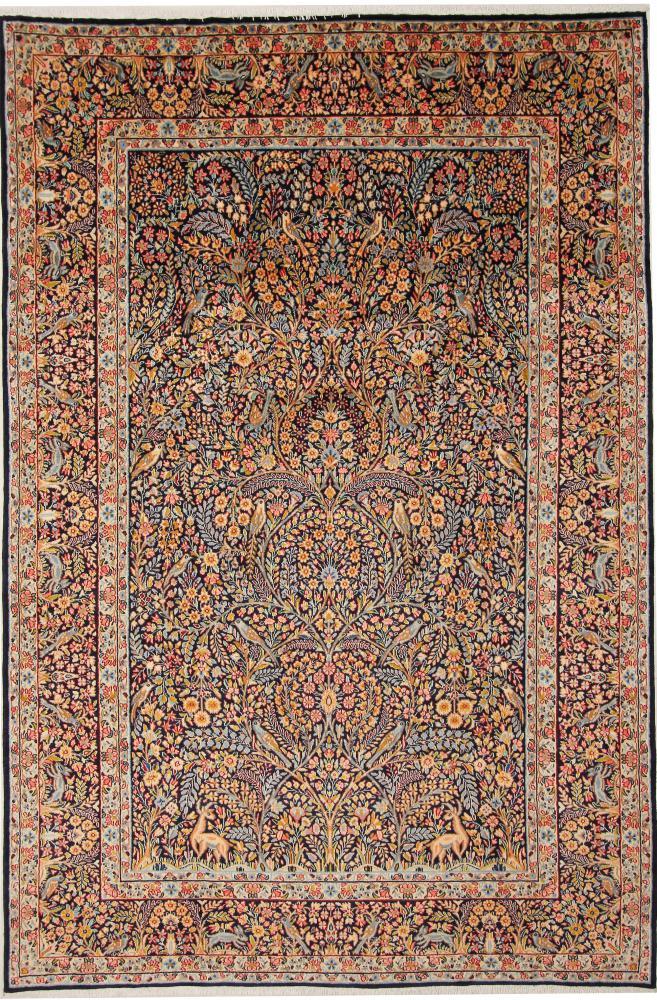
Kelardasht Handmade Carpet
These carpets are very unusual and are famous due to several antique paintings. The village of Kelardasht is located in northern Iran, south of the Caspian Sea, and near the Alborz Mountains.
The patterns on these carpets typically consist of a hexagon, surrounded by main white lines, and sometimes featuring a design resembling an agate stone in the center. In the central area and along the borders of the carpet, simple decorative patterns with flowers can be found. The background color is often brick-red, with dark blue and brown being the dominant colors. The fibers of these carpets are made from soft yet thick wool and include cotton warp threads, with Turkish knots. These carpets are highly durable and have long-lasting quality.
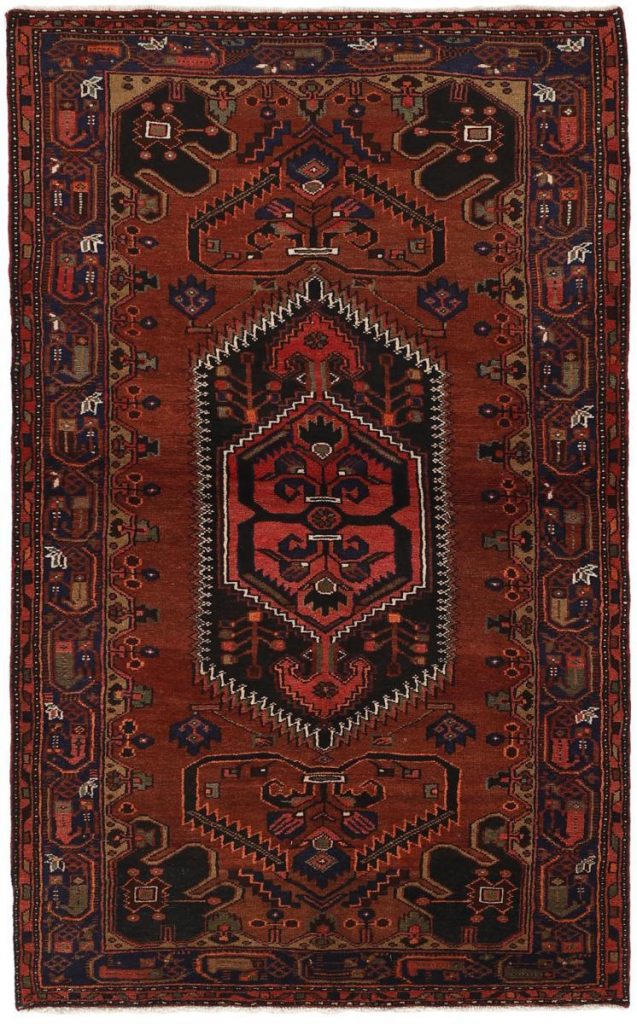
The quality of these carpets varies significantly. Before 1960, they were of very high quality. Between 1965 and 1980, when Western collectors pressured weavers to change the patterns and colors of their carpets, the quality declined. After the 1979 Revolution, the quality of these carpets improved, and today, the color and design quality is as good as it was in the past. You can visit the carpet store section of the website Donyaye Farsh to see other carpet designs.
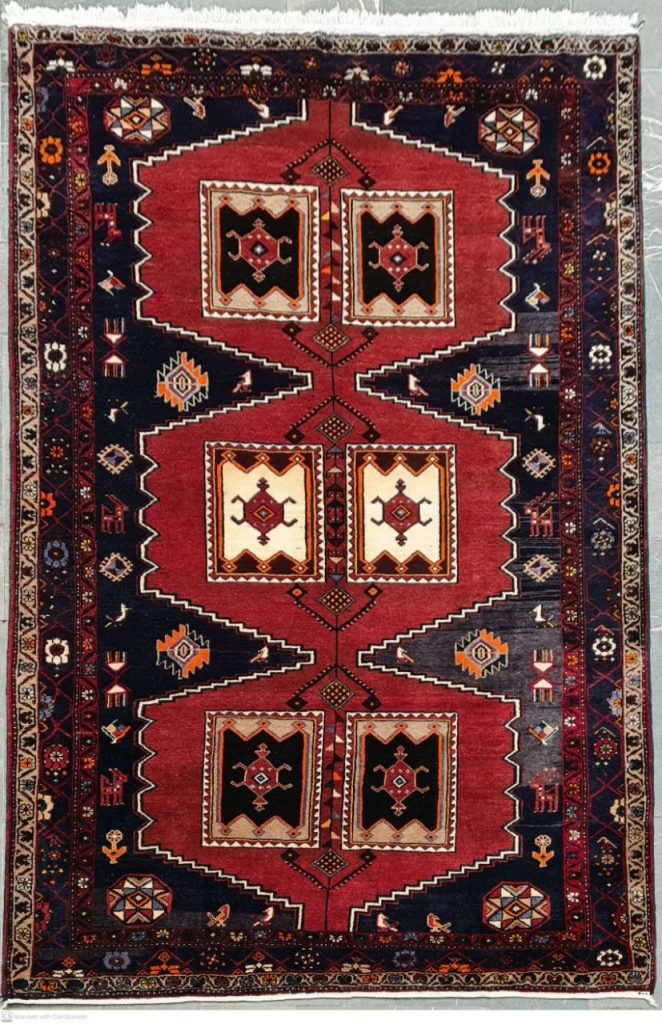
Kaliayi Handmade Carpet
Iran is made up of various ethnic groups, one of which is the Kurds, who mainly reside in the western parts of Iran, particularly in the provinces of Kurdistan, Zanjan, and Kermanshah. Historically, they lived as nomads, but today they have settled in these areas and engage in agriculture and livestock farming. Kurdish men can easily be distinguished from other ethnic groups by their traditional clothing, including loose trousers and wide belts. There are approximately 5 million Kurds living in Iran, and large Kurdish regions also exist in Turkey and western Iraq.
Kurds are known for being skilled carpet weavers who produce high-quality carpets. These carpets are woven from premium fibers, and pure dyes are used for coloring them. Older Kaliayi carpets are woven with wool fibers, while the fibers in newer carpets are made from cotton. In both types of carpets, there are two wefts between each row of knots. Their designs often feature large geometric patterns with matte colors, and diamond-shaped squares are also a common motif. The final product is very sturdy, and these carpets are heavy, dense, and highly durable. The classic size of these carpets is 150-160 x 300-330 cm, and they tend to be relatively thin compared to their length.
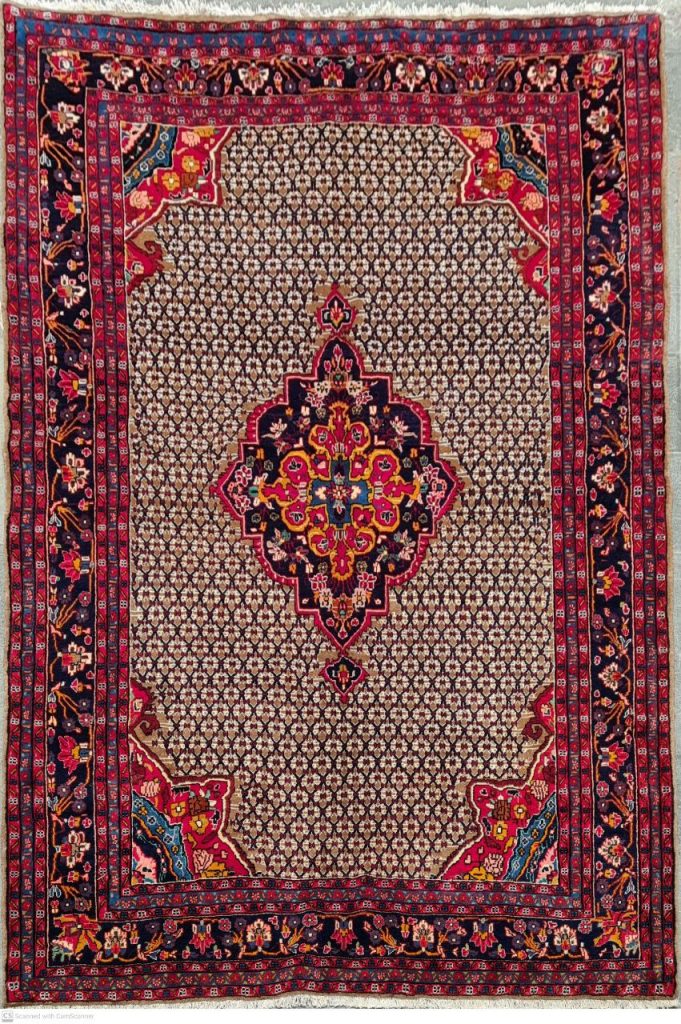

Leave a Reply